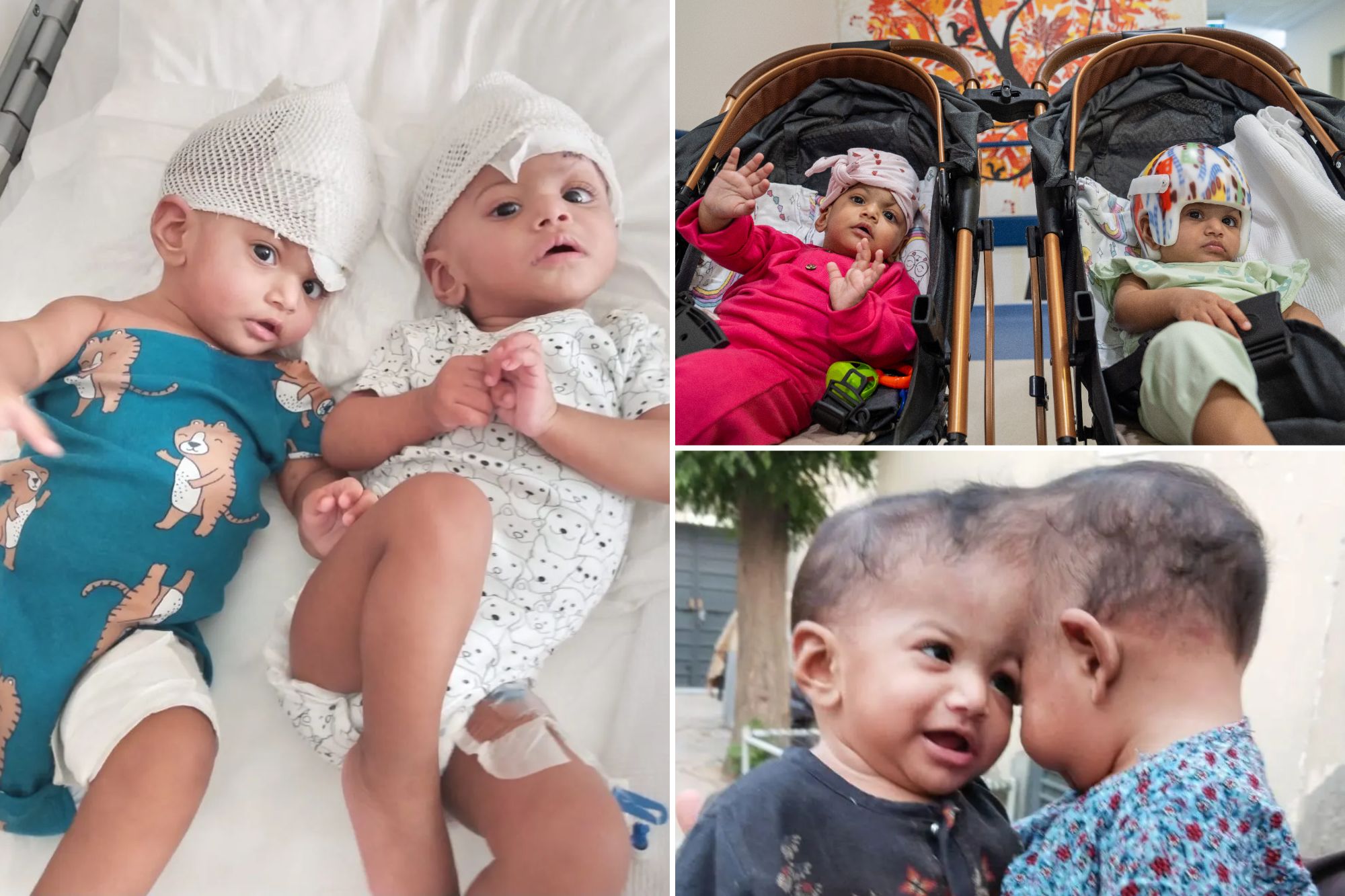
Surgeons are celebrating after successfully separating conjoined twins joined at the head.
The twin girls, named Minal and Mirha, were born in Pakistan last year, with each other in blood vessels and brain tissue, which made the separation operation extremely high risk.
Despite the potential complications, the marathon 14-hour procedure was pulled off by UK neurosurgeon Professor Noor ul Owase Jeelani and his team at Ankara Bilkent City Hospital in Turkey on July 19.
Now, exactly two months later, Minal and Mirha are almost ready to leave the hospital and go home.
“They are making a great, really great recovery,” Professor Jeelani told Sky News. “They should be able to return to Pakistan in a few weeks.”
Jeelani and his fellow surgeons used mixed reality (MR) technology to help separate the one-year-old girls, who were medically known as “craniopagus twins”.
MR technology combines 3D imaging with the physical world and is “used to increase precision during complex operations,” according to Sky News.
A 3D model of the twins’ heads was created with the help of MR technology so doctors could rehearse the surgery before it took place.
geminiuntwined.org
“The technology developed to undertake this work makes many of the more routine surgeries we perform safer, less invasive and more effective,” Jeelani explained.
The team also completed a smaller successful operation on the twins before the final 14-hour separation operation on July 14.
“To be able to give these girls and their families a new future where they can live independently and enjoy their childhood is a special privilege,” Jeelani said excitedly.
This is not the first high-risk split surgery the British neurosurgeon has completed.
In 2022, he led a 27-hour operation involving more than 100 doctors corresponding via virtual reality headsets in two different locations.
The operation was performed on 3-year-old twins Bernardo and Arthur Lima, who were also born with fused brain tissue.
As in the case of Minal and Mirha’s separation surgery, Jeelani used virtual reality technology to help prepare for the procedure.
“It’s really great to see the anatomy and do the surgery before you actually put the kids in any danger,” Jeelani said at the time. “You can imagine how reassuring that is for the surgeons.”
#Conjoined #twins #born #conjoined #brain #tissue #separated #risky #operation
Image Source : nypost.com